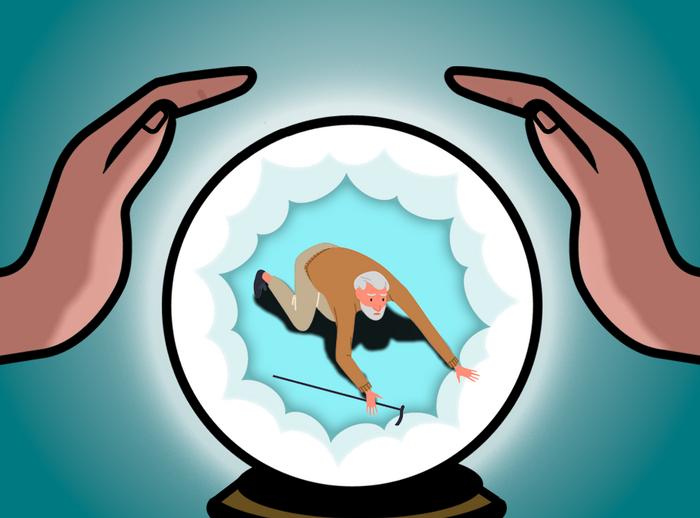Researchers Unveil Easy-to-Use Formula for Estimating Fall Probability
A team of Japanese researchers has developed a new tool to help predict the likelihood of falls in older adults. The assessment, which combines physical tests and a simple questionnaire, aims to address the growing problem of fall-related injuries in aging populations worldwide.
The study, published in Osteoporosis International, analyzed data from over 2,300 participants in community exercise groups over a ten-year period. The researchers found that poor oral and cognitive function, along with previously known factors like inability to stand on one leg, contribute significantly to fall risk.
Comprehensive Approach to Fall Prevention
Associate Professor Hiromitsu Toyoda from Osaka Metropolitan University’s Graduate School of Medicine, who led the study, emphasized the tool’s potential impact: “We believe that this tool will provide valuable information to health care providers for screening older adults at risk for falls and assist them in prevention and follow-up care.”
The research team reviewed 7,726 physical tests and data from the Japanese government’s Kihon Checklist, a self-reporting questionnaire. This comprehensive approach allowed them to identify a broader range of risk factors than previous studies.
Why it matters: Falls are a major health concern for older adults, with one in three people over 65 experiencing a fall each year. These incidents can lead to serious injuries, reduced mobility, and decreased quality of life. By providing an easy-to-use risk assessment tool, healthcare providers and individuals can take proactive steps to prevent falls and their potentially devastating consequences.
The study’s findings challenge some common assumptions about fall prevention. While a history of falls and balance issues remain important indicators, the researchers discovered that oral health and cognitive function play a more significant role than previously thought. This suggests that a more holistic approach to fall prevention may be necessary.
Interestingly, the study also found that short-term participation in exercise programs was not effective in reducing fall risk. This highlights the importance of sustained, long-term engagement in physical activity for fall prevention.
Professor Toyoda and his colleagues hope that their tool will be widely adopted by municipalities and healthcare providers. “Preventing falls among older adults not only extends their life expectancy but also helps control medical and long-term care costs,” Toyoda explained.
The tool’s simplicity is one of its key advantages. By combining physical assessments with a straightforward questionnaire, it can be easily implemented in various healthcare settings, from community centers to primary care offices.
However, some questions remain about the tool’s applicability across different populations. The study was conducted in Japan, and further research may be needed to validate its effectiveness in other countries with different healthcare systems and cultural contexts.
Additionally, while the tool can predict fall risk, it doesn’t directly address how to reduce that risk. Future studies could focus on developing targeted interventions based on the specific risk factors identified by the assessment.
As the global population continues to age, tools like this will become increasingly important in maintaining the health and independence of older adults. The researchers suggest that future work could explore how to integrate this assessment into routine healthcare check-ups and develop personalized fall prevention strategies based on individual risk profiles.
This research represents a significant step forward in fall prevention, offering a practical solution to a growing public health concern. As healthcare systems around the world grapple with the challenges of aging populations, tools that can effectively predict and prevent falls will play a crucial role in promoting healthy aging and reducing the burden on healthcare resources.


